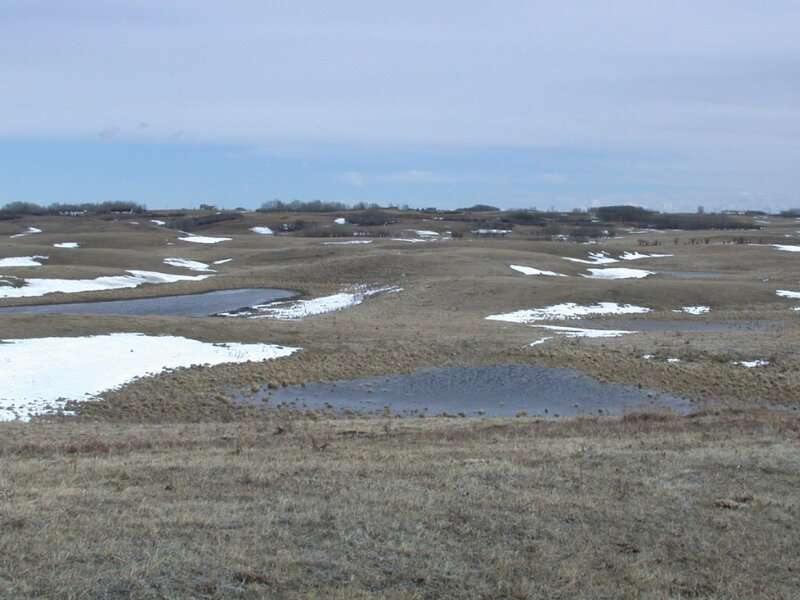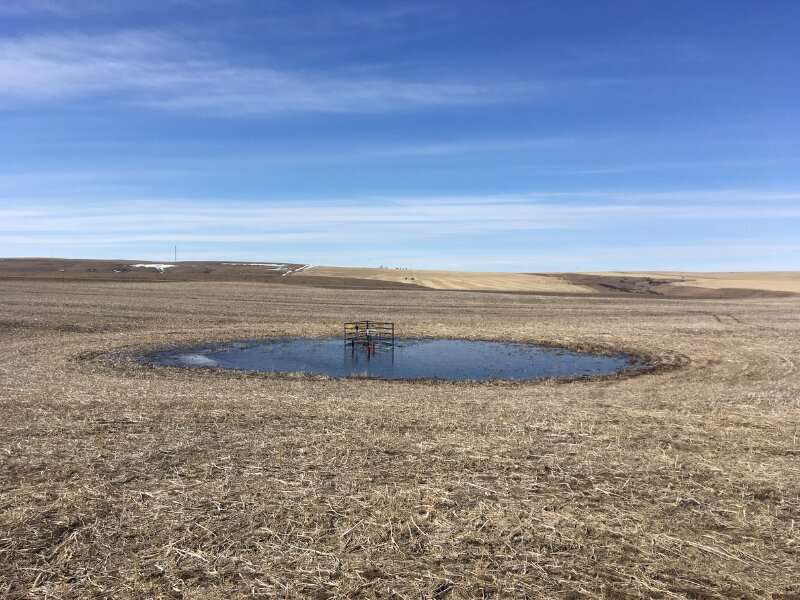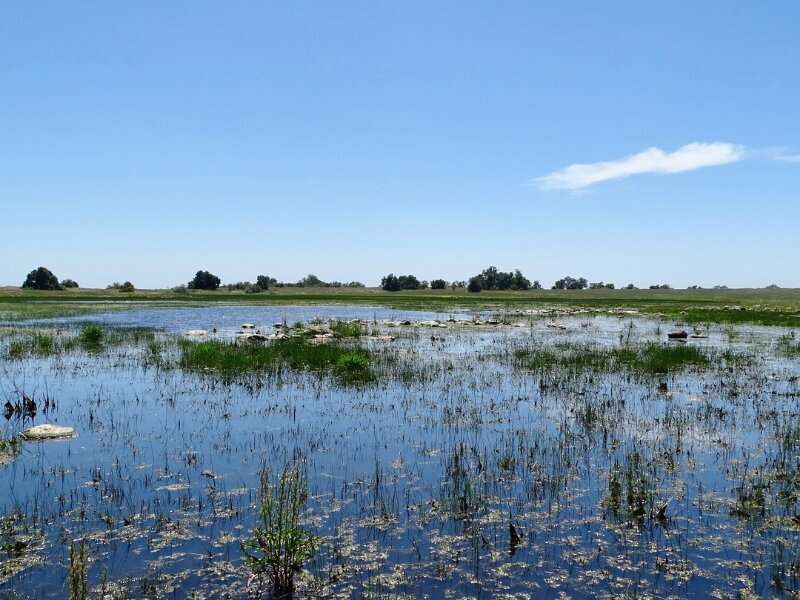Do depressions in Canadian prairies hold the key to groundwater recharge?

The water cycle is a delicate balance. In natural settings, water from rainfall or snowmelt can soak into soil or runoff to streams. Some of the water is stored in natural underground reservoirs—called groundwater. Plants use up the water to grow, and then new precipitation refills the groundwater—a process called groundwater recharge.
In dry climates, plants use up most of the water that enters the soil. So how does the groundwater get refilled? For Canadian prairies the answer is found in depressions located in the landscape. In these depressions, runoff from the surrounding land accumulates and moves into the groundwater.
The depressions in the landscape were left by glaciers when the last ice sheet left the Great Plains about 10,000 to 12,000 years ago. Like a rain garden, they take in runoff from the surrounding environment, but are typically bigger. They are 50 to 100 meters in diameter and 1 to 2 meters deep.
However, scientists are worried changes in climate could impact this delicate groundwater recharge process.
Currently, most of the water in the depressions comes in the form of runoff from snowmelt as it flows over frozen soil and into the depressions. Researchers in Canada studied how this process may be disturbed in the future as the climate changes.
Masaki Hayashi and the team at University of Calgary recently published this work in Vadose Zone Journal, a publication of the Soil Science Society of America.

"The motivation for this research came from the need to estimate recharge for sustainable management of groundwater in the Canadian prairies," says Hayashi. "We cannot manage a renewable resource unless we know how much is renewed every year. It would be like trying to manage expenses from a bank account without knowing the amount of revenue."
Experts predict that the future climate conditions of these prairies will be warmer and wetter. While it seems like this would result in more groundwater recharge, the scientists wanted to determine if that would be the case in these depressions.
These low areas collect snowmelt runoff and can even become ponds in the spring. Some of the larger depressions even have water that stays throughout the summer. Those are called prairie wetlands or prairie pothole wetlands and are home to many aquatic plants and animals in the area.
To determine how a warmer and wetter climate would impact groundwater recharge, the scientists used a model to simulate the environment. By placing instrumentation directly in the depressions, they gathered information on soil properties, the weather, and the size of the depression and surrounding environment. Their work, a type of "soil water balance" model, used the data they gathered to simulate how the water may move from the surface into deeper soil layers in the future.
They found that snow accumulation as well as how much of and how long the soil is frozen in the winter will decrease. This means there will be less runoff to the depressions and less groundwater recharge.

"A wetter climate generally results in a higher recharge, but that does not seem to be the case in the northern Great Plains, where recharge is focused in depressions," Hayashi explains. "Even though the total precipitation may increase, we will have more rain and less snow. This means that snow accumulation in winter will decrease. Also, we will have a shorter duration of frozen soil and shallower penetration of soil frost."
He adds that this creates an issue because slow moving snowmelt flowing over frozen soil, which doesn't allow it to absorb quickly, is the key to the runoff getting to the depressions.
The decrease in recharge can have many effects on the environment, the researchers say. For example, many small springs are fed by groundwater and could be impacted.
"It may result in a decrease in the base flow of small streams fed by groundwater," Hayashi says. "Some of the perennial streams may become seasonal. This may have a strong influence on the stream ecosystem. Overall, these small depressions may seem less important compared to larger depressions holding prairie wetlands. However, there are many more small depressions, and they are collectively important for groundwater recharge."
No comments:
Post a Comment